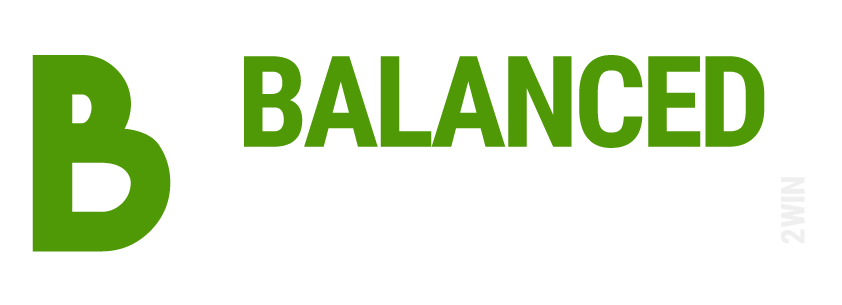
Using the Balanced Scorecard in the Public Sector
Article Highlights
- The pace of change has impacted private, nonprofit and public sector organizations. All must focus on the execution of strategy.
- The Balanced Scorecard system, while originally created with the private sector in mind, can be easily altered to fit the demands of the public sector.
- Many public sector organizations have embraced the Balanced Scorecard and are using it to drive focus, accountability, and alignment.
Why the need for a Balanced Scorecard?
Rarely will a day pass without someone commenting on the pace of change in modern organizations. In fact, it truly does seem as if change is the only constant in our turbulent world. One thing that has not changed, however, is the critical importance of crafting an effective strategy to differentiate you from rivals. While many organizations excel at creating strategies, sadly the vast majority struggle mightily to effectively execute with recent estimates suggesting upwards of 90% of organizations failing to implement their strategies. The reasons for this profound failure are many and varied but may be summarized by a number of factors: first, in many organizations the vast majority of employees don’t understand the vision and strategy, and of course it is very difficult to implement something you don’t understand. Secondly, our performance measurement systems are geared primarily for measuring past performance, chiefly financial results, when the execution of strategy demands a forward look. Finally, in today’s organizational environment intangible assets are increasingly marking the difference between success and failure. Staff knowledge, stakeholder relationships, and cultures of innovation and change are the stuff of modern value creation, but their “soft” essence makes them difficult to identify, track, and fully exploit. Clearly a change is needed if organizations are to rise to the challenges awaiting them in the twenty-first century.
The Balanced Scorecard
The Balanced Scorecard (BSC) was developed to overcome many of the challenges outlined above. The framework was created in 1990 by two men: Robert Kaplan and David Norton. They realized that in order to thrive, or even compete, in the 21st century, organizations required a system that allowed them to take advantage of intangible assets, and balanced both financial and non-financial indicators of success, thereby increasing the odds of strategy execution. The basic premise behind the Balanced Scorecard is a simple, yet profound, one. Financial measures are, and always will be important, but they must be supplemented with other indicators which predict future success.
At the center of the Balanced Scorecard diagram we see the word “strategy.” Unlike traditional performance measurement systems which have financial controls at their core, the Balanced Scorecard begins with an organization’s strategy. We seek to translate the strategy into performance measures which can be tracked and used to gauge our success in the successful implementation of the strategy. For public sector enterprises, the Customer perspective is placed at the top of the Scorecard model. Here we measure our performance from the eyes of our customer. What do they expect or demand from us – timely service, quality, a deeper relationship, accessibility? By answering these questions, we can derive measures that allow us to track our success from their perspective. Now we turn our gaze inward and examine our Internal Processes. To meet customer demands there are core processes at which we must excel. Every organization will have dozens if not hundreds of processes but in this perspective, we’re attempting to measure our performance on those that directly impact performance for our customers. As public-sector organizations, it’s critical to balance effectiveness (getting the job done for customers) with efficiency. That’s where the Financial perspective comes in. Here we measure ourselves from the eyes of our financial stakeholders and gauge their expectations for us as an organization. Finally, the Scorecard forces us to grapple with the true value-creating mechanisms of modern organizations, intangible assets. We do so in the Employee Learning and Growth perspective. The focus here is on measuring three things: human capital (employee skills, training, etc.), information capital (access to information for example), and organizational capital – the ability to change and sustain success (culture, teamwork, etc.). Sometimes considered “soft stuff,” these measures are truly the enablers of everything else appearing on an organization’s Balanced Scorecard.
Success Stories
Thousands of organizations around the globe have harnessed the simple, but not simplistic, principles embodied in the Balanced Scorecard model to achieve tremendous results. From an unrelenting focus on strategy, to employee alignment around a few key goals, to breakthrough financial results, these organizations have used the Balanced Scorecard as a powerful measurement and management system, one truly suited for the modern world we face. Here are a few examples:
Fulton (Georgia) County School System: This 83 school, 73,000 student organization turned to the BSC in 2000 in an effort to align strategy with system needs and measure performance. Since that time, SAT scores have gone from meeting the national average to exceeding it by 23 points. The BSC has also helped the school system build new schools on time and on budget which has been critical since Fulton County, like most public-sector organizations, has recently been forced to “do more with less.”
Army Medical Department (AMEDD): When Lt. General James Peake took over the organization in 2000 he realized they “recruit soldiers, but retain families,” and developed a new strategy to ensure the provision of outstanding medical benefits. The BSC was chosen as the mechanism to help execute this strategy. The Scorecard has been used successfully throughout the department and has been particularly effective in helping groups compete more effectively for scarce resources.
Texas Education Agency (TEA): A $15 billion organization providing some 4 million elementary and high school students with a quality education, the TEA chose the BSC in 1999 to depict strategy in more graphic and precise terms, prioritize and streamline goals, and help the agency communicate more effectively with politicians and regulators. Today, up to 50% of the agency’s divisions have developed Balanced Scorecards which has helped them reap more than $5 million in efficiency gains.

